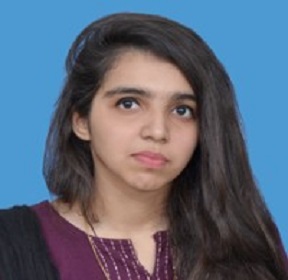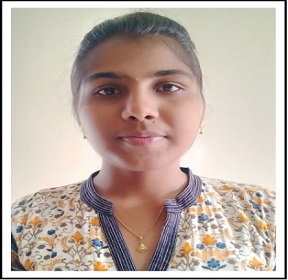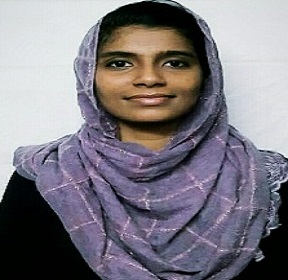Speakers
Pashmeen Lakhani
University Of Karachi PakistanTitle: Comparative study of medical education assessment formats (best choice questions vs short essay questions) and its impact on medical students.
Abstract:
The purpose of the research is to appraise medical students’ outlook towards methods of medical education assessment methodology and whether the predilection has impacted the academic results. This cross-sectional study was conducted on 300 randomly selected medical students (bachelor of medicine, bachelor of surgery - m.b., b.s) from all accredited medical colleges from university of karachi. The students have biased views regarding the format of assessment. Students believe bcqs are superior to online seqs at assessing clinical concepts; 85% of students agreed that bcqs assess clinical concepts; however, only 48% believe the same about seqs. Furthermore, the results revealed that a significant number of students 75.67% believed bcqs require a thorough studying of the course while only 52.33% of students believed the same of seqs. Consistent with this result was that 52% preferred the format of assessment was bcqs when they had studied thoroughly. Conclusive evidence presented that students perceived the multiple choice format a better assessment of clinical concepts and problem solving skills than short essay questions. Also observed was that cramming helps more in seqs while studying thoroughly in a course aids solving bcqs. Since the results varied meticulously between seqs and bcqs, it is to be assumed that neither format is sufficient for complete assessment of students’ distinction in a subject. Also, an altered form of assessment has caused students to be more thorough with their courses. It is however proposed that further control trials be carried out to assess students’ examination skills.
Biography:
Pashmeen Lakhani is a Doctor by profession and works as an Educator for a Germany-based website, on creating content for medical students. She works as a writer for a non-profit. non-government organization on the project on Research Landscape in Pakistan and is a student in the BioInnovation Scientist program. Her aim is to research and devise efficient educational tools. She is an advocate of equipping future health-care professionals with knowledge on mental health. She has, till date completed over 300 Massive Open Online Courses (MOOCs), attended workshops, and webinars.
S VARSHA
Sri Ramachandra Institute of Higher Education and Research IndiaTitle: Comparison of quantitative troponin I with LV strain in acute mi patients
Abstract:
Objective: to compare the quantitative troponin I with left ventricle strain in acute myocardial infarction patients as assessed by echocardiography. Acute myocardial infarction is an irreversible damage due to a lack of oxygen may lead to impairment in systolic and diastolic function. According to the study a total of 50 consecutive patients of acute myocardial infarction were included. On 50 patients 39 were males and 11 were females. Cardiac troponin testing is central to the diagnosis of acute myocardial infarction. We evaluated a sensitive troponin I assay for the early diagnosis and risk stratification of myocardial infarction. The echocardiographic assessment of regional myocardial function plays a critical role in the diagnosis and management of ischemic heart disease and in most laboratories relies on the visual detection of endocardial wall motion abnormalities and assessment of left ventricular (LV) ejection fraction. troponin I concentration were measured and myocardial strain rate was calculated by global longitudinal strain method by echocardiography. patients with previous myocardial infarction were excluded. Result: there was correlation between the strain rate imaging and myocardial changes in acute myocardial infarction patients (i.e.,) lower the strain rate imaging higher the myocardial changes.
Biography:
S. Varsha is a student intern of Sri Ramachandra Institute of Education and Research, India
Syed Ali Afrin
Sri Ramachandra Medical Institute of Higher Education and Research IndiaTitle: Comparison of E/E' , left atrial volume index and pulmonary artery hypertension in patients with hypertensive induced left ventricular hypertrophy
Abstract:
Aim: We evaluated the prevalence of LA enlargement (LAE) and the relationship with left ventricular (LV) mass and diastolic function in subjects hypertensive induced left ventricular hypertrophy referred to an echocardiographic study for routine clinical indications.
Method: 100 patients underwent a comprehensive echo-Doppler examination. LAE and LV hypertrophy (LVH) were defined as LA volume index (LAVI) >29 ml/m2 and LV mass index (LVMI) >50 g/m2 respectively. Abnormalities of LV relaxation and LV filling were diagnosed by age-related thresholds of early mitral flow velocity to Ei ratio (E/Ei) ≥16, respectively.
Result: According to our study, we found that the measurement of E/Ei derived from medial mitral annulus estimated better .It also supports that E/Ei is one of the best Doppler echocardiographic parameter to estimate diastolic function. E/Ei and LAVI were estimated for patients with Concentric Left ventricular hypertrophy as well as normal patients. In our study, LAVI correlates better with Grade of diastolic dysfunction.LAVI is greater in patients with high E/Ei ratio. Age, height, weight was found to be associated with high LAVI. Other studies have shown that the older age group patients are more prone to left atrial enlargement. Patient with Diabetes mellitus (DM), hypertension (HTN) ,Chronic Kidney Disease (CKD) are associated with diastolic dysfunction, that shows raised E/Ei Therefore non-invasive tissue Doppler measurement of E/Ei can be used to stratify the risk of the patients.
Conclusion
100 Consecutive patients were included in the study and patients with Atrial fibrillation and significant Mitral regurgitation were excluded.Diastolic dysfunction contributes for Left Atrial Remodelling.LAVI increases as an expression of diastolic dysfunction More E/Ei , increase chance of getting Left atrial enlargement in advanced diastolic dysfunction coexist with pulmonary artery hypertension which eventually leads to left sided Heart failure.
Biography:
Syed Ali Afrin is a student intern of Sri Ramachandra Institute of Education and Research, India



